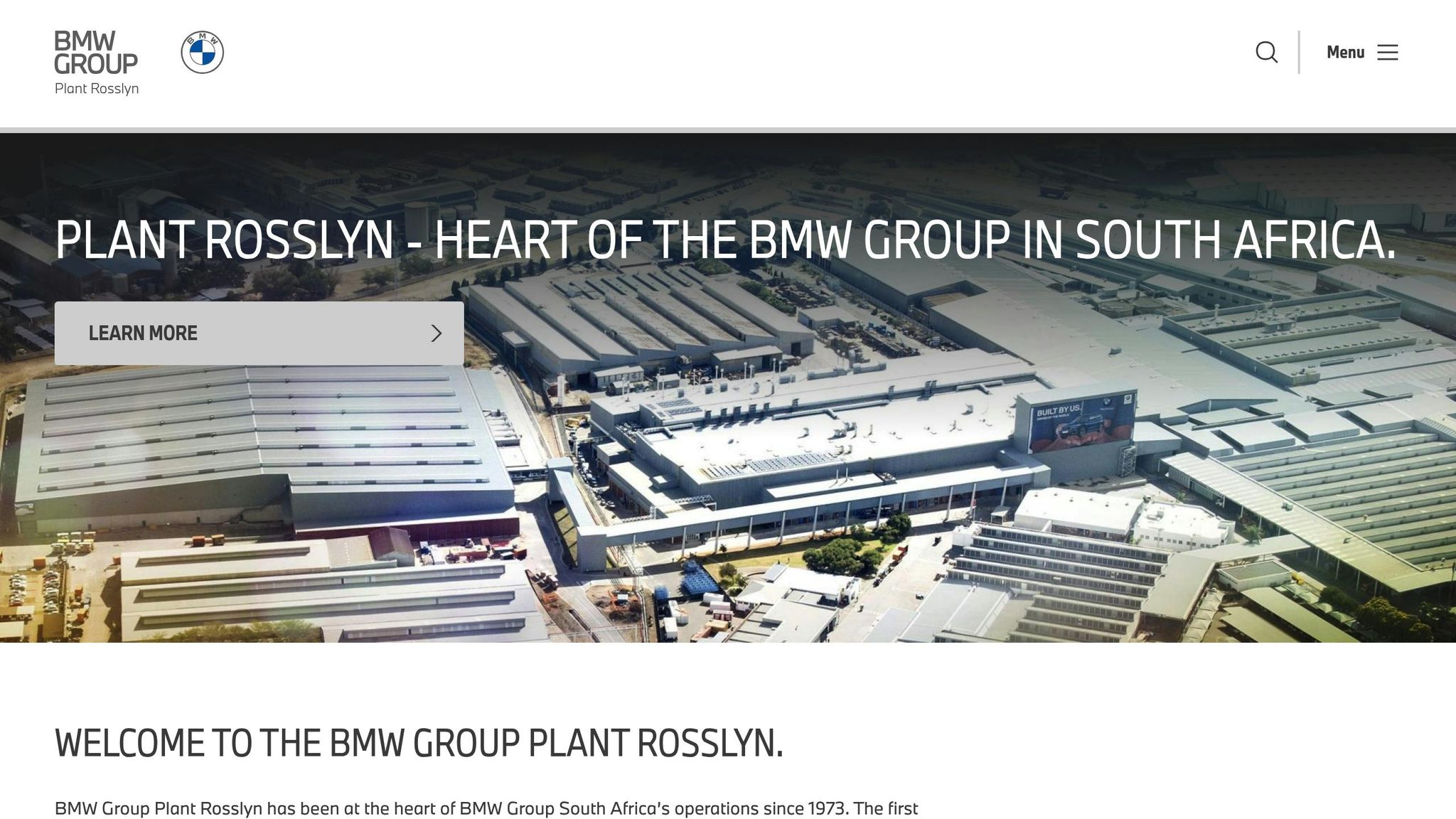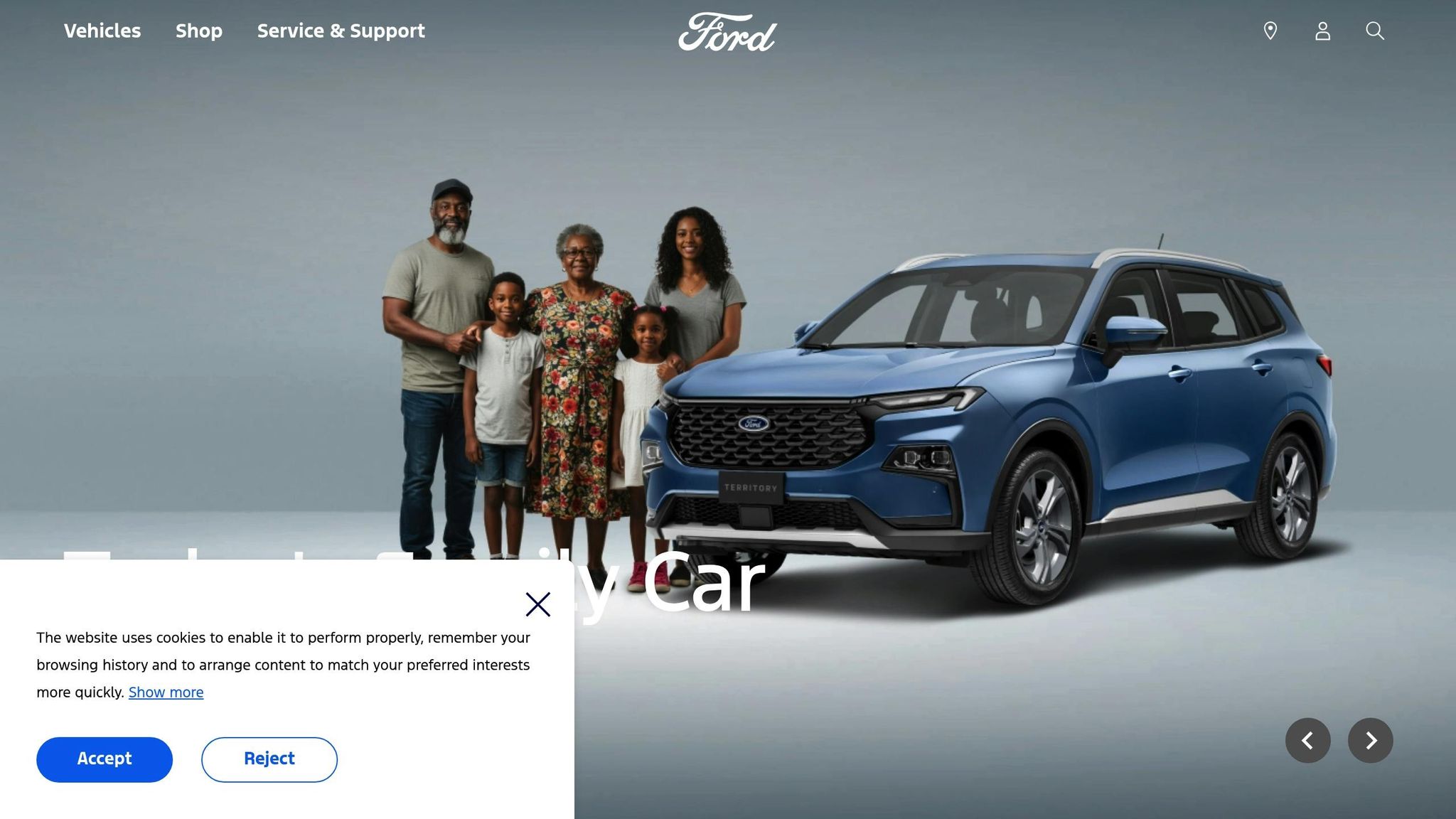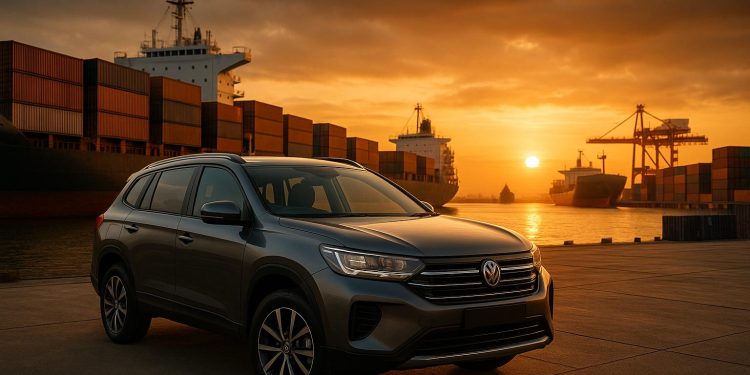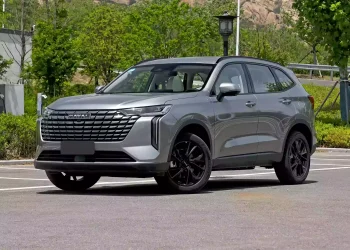The U.S. has increased import duties on South African vehicles and parts to a combined 55% in 2025, devastating the automotive industry. Exports to the U.S., which accounted for $1.6 billion in 2024, have plummeted by over 80%, threatening 100,000 jobs and entire communities. Major automakers like BMW and Mercedes-Benz are struggling to offset these losses, while Ford and Toyota are focusing on diversifying into other markets like Asia and Africa. Policymakers and businesses alike are working to address this crisis.
Key points:
- Combined tariffs: Up to 55% (25% Section 232 + 30% general tariff).
- Export impact: Over 80% decline in U.S. exports in 2025.
- Economic fallout: $1.6 billion in lost revenue; 100,000 jobs at risk.
- Automaker strategies: BMW and Mercedes are shifting focus globally; Ford and Toyota are targeting non-U.S. markets.
- Government response: Exploring alternative markets and trade policies to mitigate losses.
The stakes are high, and the response from automakers and policymakers will shape the future of South Africa’s automotive industry.
US Tariffs | Impact on South Africa’s automotive sector
How US Import Duties Affect South African Automakers
In 2025, US import duties on South African vehicles and components reached staggering levels. A 25% Section 232 tariff on vehicles expanded in May to include components, and by August 7, a general tariff of 30% was introduced. Combined, these duties now total up to 55%.
The impact on exports has been devastating. In the first half of 2025, vehicle exports to the US plummeted by more than 80% compared to the same period in 2024. To put it in perspective, only 2,875 vehicles were shipped to the US between January and June 2025, a sharp drop from the over 16,000 units exported during the same timeframe the previous year. This dramatic decline has forced automakers to rethink their strategies.
"In the automotive sector, where exports to the US total approximately R24.1 billion, the exposure to tariffs will be monumental. The sector is currently facing 25% Section 232 tariffs, and the proposed 30% increase could raise total duties to 55%, rendering exports uncompetitive", explains Khulekani Mathe, CEO of Business Unity South Africa.
East London: The Epicenter of the Crisis
The economic fallout has been particularly harsh in East London, a city deeply tied to automotive manufacturing. Mercedes-Benz South Africa and its network of suppliers contribute around 25% to the local economy, making the region highly vulnerable to these changes. The effects ripple far beyond the assembly lines, threatening the livelihoods of thousands.
Adding to the challenges, the supply chain for automotive components is facing unique hurdles. These parts are often custom-made for specific models and production lines, making it difficult to redirect them to other markets.
"Mercedes has suspended C-class production, significantly impacting its component suppliers. They cannot easily pivot to new markets because they are supplying a tailor-made product into a global supply chain", says Waldo Krugell, Professor of Economics at North-West University.
The Human Cost
The fallout isn’t just economic – it’s human. Across the automotive sector, around 20,000 jobs are at risk, affecting both manufacturers and their suppliers. In East London, where the local economy heavily depends on automotive production, the consequences could be devastating.
Mercedes-Benz’s East London plant, which employed 2,400 workers and produced 70,000 vehicles in 2024, temporarily shut down from June 24 to July 31, 2025. This closure triggered short-time work at more than 26 Eastern Cape companies.
A Tough Road Ahead
The competitive landscape has also shifted. Global competitors are now redirecting their exports into markets traditionally served by South African manufacturers. Even if the tariffs were reduced, regaining lost market share and rebuilding relationships with US buyers would be an uphill battle.
1. BMW South Africa

BMW South Africa is navigating a tough landscape as rising US import duties put pressure on its operations. The Rosslyn plant, a key player in the company’s global supply chain, has been hit hard, particularly in one of its most lucrative export markets.
Export Market Exposure
In 2023, the United States emerged as South Africa’s sixth-largest market for light vehicle exports, with BMW playing a major role in shipping 19,590 units across the Atlantic. Even more striking, the US ranked as South Africa’s third-largest automotive export market by value, accounting for $1.56 billion (R28 billion) that year.
One of the standout exports from BMW South Africa is the BMW X3, a model produced at the Rosslyn plant. However, this vehicle now faces a 55% combined tariff rate, which includes a 25% Section 232 duty and an additional 30% general tariff introduced on August 1, 2025. These tariffs have taken a toll, with BMW’s exports to the US plummeting, contributing to an 80% industry-wide decline in vehicle shipments during April and May 2025.
Revenue Impact
Globally, BMW is grappling with over €1 billion ($1.2 billion) in tariff-related expenses in 2025, and the South African division carries a significant share of this burden due to its role as a major exporter of the X3 model.
Adaptation Strategies
BMW is responding with a mix of local and global strategies. CEO Oliver Zipse has expressed cautious optimism about managing the tariff challenges. A key part of this approach involves leveraging BMW’s US manufacturing operations. For instance, the Spartanburg plant in South Carolina exported $10 billion worth of vehicles in 2024, creating potential for a "netting mechanism" where import duties could be offset by export credits from US-based production.
To reduce its reliance on the US market, BMW South Africa is also exploring new export opportunities in Asia and Africa, aiming to diversify its customer base.
Production Localization
BMW is doubling down on its operations in South Africa, investing $234 million (R4.2 billion) to electrify its Rosslyn plant.
"Our significant investment in electrification here demonstrates our long-term belief in South Africa as a key manufacturing hub within our global network, driving innovation, skills and sustainable growth for the region", said Milan Nedeljković, chairman of BMW South Africa.
The Rosslyn facility is on track to reach its highest annual production volume in 52 years. With the ability to produce both plug-in hybrid electric vehicles (PHEVs) and traditional internal combustion engine (ICE) models on the same line, the plant has the flexibility to adapt to shifting market demands. Interestingly, PHEVs now make up about 10% of local X3 sales.
"Producing both PHEV and ICE models on the same line demonstrates the flexibility and adaptability of Plant Rosslyn, enabling us to effectively respond to global market demands", said Ernst Kohlmeyer, General Manager of Quality at BMW Group South Africa.
These challenges and strategies highlight how BMW South Africa, like the broader South African auto industry, is adapting to the evolving US trade environment.
2. Mercedes-Benz South Africa

Mercedes-Benz South Africa is navigating a tough road as U.S. import duties threaten the future of its East London plant. The facility, which heavily relies on American exports, faces significant risks due to this U.S.-focused export strategy.
Export Market Exposure
The numbers paint a grim picture: nearly 90% of the plant’s exports head to the U.S., and shipments have plummeted by 82%. For context, the facility produced 70,000 vehicles in 2024, but between January and June 2025, only 2,875 vehicles made it to the U.S., compared to over 16,000 during the same period last year. This steep decline has hit the production of C-Class models especially hard. Acting Eastern Cape Premier Mlungisi Mvoko underscored the gravity of the situation:
"You cannot imagine East London without Mercedes-Benz. Given these tariffs, it would be difficult".
Such export challenges are creating a ripple effect, significantly impacting revenue and profitability.
Revenue Impact
The financial fallout has been severe. U.S. tariffs slashed net profits by €360 million ($432 million), with profits dropping from €6.1 billion to €2.7 billion in the first half of 2025 – a staggering 56% year-on-year decline. In the second quarter alone, net profit plunged 69%, while revenue saw a 10% drop compared to the previous year.
These setbacks have prompted Mercedes-Benz to rethink its production and operational strategies on a global and local scale.
Adaptation Strategies
Faced with an 82% export decline, Mercedes-Benz is reworking its game plan. CEO Ola Källenius has laid out a multi-faceted approach to tackle these challenges head-on. He explained:
"We’re adapting by leveraging our global footprint, executing the Next Level Performance programme, and shifting production to more resilient models to increase the resilience of our company".
The company is pivoting toward premium models that are less affected by U.S. tariffs. Additionally, they are exploring the possibility of transferring more production from European plants to South Africa, taking advantage of duty-free access to the U.S. Källenius also highlighted the need to strike a balance between product quality and cost efficiency:
"The best response is to stay on course to deliver desirable and intelligent products, while keeping a tight grip on costs".
Production Localization
To further adapt, Mercedes-Benz is boosting the flexibility of its South African operations. Production chief Joerg Burzer emphasized the importance of adaptability in the current climate:
"Of course that could change any day. I have never seen such a complex environment. The key competence you need today is flexibility".
The company is diversifying its market reach, investing in flexible manufacturing systems, and preparing for various tariff scenarios to safeguard the East London plant’s future. Ultimately, the survival and success of this facility will depend on how effectively Mercedes-Benz can implement these strategies while staying competitive on the global stage.
sbb-itb-09752ea
3. Ford South Africa

Ford South Africa operates independently of U.S. export markets. Although the company has significant manufacturing facilities in the country, Ford has confirmed that it does not export vehicles from South Africa to the U.S.. This approach allows Ford to sidestep the 25% tariff imposed on South African exports to the United States.
This strategic decision highlights Ford’s adaptability in navigating a market where tariffs have reshaped export priorities.
Export Market Exposure
Ford South Africa focuses its export efforts on global markets outside the United States. One notable example is the export of the Ranger to over 100 destinations, including Europe. This diversification has proven beneficial, reducing reliance on any single region and shielding the company from U.S. trade challenges that have impacted other automakers. While the U.S. ranked as South Africa’s sixth-largest export market for light vehicles in 2023, Ford’s emphasis on alternative markets underscores its deliberate and strategic approach.
Strategies for Global Competitiveness
Ford’s ability to stay competitive hinges on its proactive global strategy. By exploring new markets, diversifying export destinations, and investing in advanced manufacturing technologies, Ford strengthens its position. A key part of this effort is its involvement in the Tshwane Automotive Special Economic Zone (TASEZ). Additionally, Ford prioritizes regional supply chain integration, forming partnerships that benefit both its local operations and its global reach. These initiatives not only enhance Ford’s resilience but also contribute to the broader stability of South Africa’s automotive industry in a shifting trade landscape.
Emphasis on Local Production
Ford South Africa continues to capitalize on its local manufacturing capabilities while expanding its efforts to localize production further. By leveraging resources like TASEZ and benefiting from strong government support, the company has bolstered its production and export capacity. With a diverse export portfolio spanning over 100 markets, Ford is well-positioned to adapt to changing global conditions. Government initiatives aimed at strengthening the automotive sector have played a crucial role in supporting Ford’s localization strategy, enhancing its manufacturing capabilities, and ensuring stability even during uncertain trade periods.
4. Toyota South Africa

Toyota South Africa is navigating a tricky landscape as U.S. import duties reshape global automotive exports. While the company’s reliance on the American market isn’t as heavy as some competitors, the U.S. still plays a crucial role in its global operations, requiring a thoughtful approach to these challenging conditions.
Export Market Exposure
The impact of steep U.S. tariffs has been felt across the industry, and Toyota South Africa is no exception. The United States, the third-largest destination for South African automotive exports, saw over 25,000 vehicles shipped in 2024. This accounts for 6.5% of all South African auto exports and 3.7% of the country’s total car production. However, with the tariff increases, U.S. sales have seen a noticeable decline, adding pressure to an already competitive market.
Revenue Challenges
The financial strain has intensified with the revised tariff structure. Since April, a 25% duty on cars – and similar rates on automotive parts implemented in May – has significantly impacted Toyota’s revenue from the U.S. market. These changes have forced the company to rethink its strategies to navigate these financial hurdles.
Shifting Strategies
To adapt, Toyota South Africa is focusing on diversifying its export markets and expanding its reach. The African Continental Free Trade Area (AfCFTA) presents a promising opportunity, allowing Toyota to strengthen its presence within the African region. Beyond Africa, the company is targeting markets in Asia, Europe, and the Middle East to reduce its reliance on the U.S.. Additionally, Toyota is leveraging tariff classifications, utilizing free trade zones, and restructuring supply chains to soften the blow of high duties.
Localizing Production
Another key focus for Toyota is increasing the transformation of raw materials into finished goods, which can help reduce tariff exposure. With trade dynamics shifting and the cost of serving the U.S. market climbing, Toyota is reevaluating its production strategy. This includes weighing the benefits of boosting local production for domestic and regional markets versus maintaining its export-heavy approach. At the same time, the company is increasing its use of locally sourced components, reducing its vulnerability to international trade conflicts while supporting South Africa’s automotive industry as a whole.
Pros and Cons
South African automakers are employing a range of strategies to navigate the challenges posed by U.S. import tariffs. Each approach reflects unique strengths and weaknesses, as companies balance immediate pressures with long-term goals.
| Automaker | Strategy | Advantages | Disadvantages |
|---|---|---|---|
| BMW South Africa | Focus on the premium market with selective diversification | • Higher profit margins can help absorb tariff costs. • Strong brand loyalty in the luxury segment reduces sensitivity to price changes. • Established presence in Europe provides alternative markets. | • Lower production volumes limit economies of scale. • Heavy reliance on the luxury market could slow recovery efforts. • Limited options for reallocating luxury vehicle exports. |
| Mercedes-Benz South Africa | Diplomatic engagement paired with market diversification | • Negotiated solutions through diplomacy could ease tariff impacts. • Premium market positioning maintains competitiveness despite higher costs. • Strong brand equity supports entry into new markets. | • Diplomatic efforts are unpredictable and often slow. • The global luxury car market is relatively small. • Significant investment is needed to establish a foothold in new regions. |
| Ford South Africa | Aggressive diversification and supply chain restructuring | • Expanding into multiple markets reduces reliance on the U.S. • Greater supply chain flexibility can cut costs. • Mass-market appeal opens opportunities in diverse regions. | • Diversification requires high upfront investment. • New markets may take time to generate substantial revenue. • Supply chain adjustments could disrupt current operations. |
| Toyota South Africa | Regional focus leveraging AfCFTA | • Access to tariff-free trade under the African Continental Free Trade Area. • Emphasis on local content reduces import dependency. • Established presence in Africa supports quicker regional expansion. | • African markets generally have lower purchasing power. • Political instability in the region increases risk. • Limited ability to compensate for lost U.S. revenue. |
These strategies showcase the diverse ways automakers are responding to the tariff challenge, but they also highlight the high stakes involved – economically and socially. The potential job losses are staggering, with estimates around 100,000 positions at risk due to the looming 30% tariff. As central bank governor Lesetja Kganyago pointed out:
"If we do not find alternative measures the impact on jobs could be around 100,000, so that is what we actually face".
Market diversification stands out as a common theme, but the execution varies widely. Some automakers are doubling down on premium markets to maintain profitability, while others are targeting volume-driven strategies in emerging regions. The challenge is enormous: replacing the $1.60 billion in export revenue tied to AGOA trade by 2024.
The timing of these tariffs complicates matters further. While companies work on long-term diversification, the immediate drop in exports creates cash flow pressures that threaten short-term survival. This tension between short-term needs and long-term strategies is a critical issue.
Geographic risks also vary by approach. Companies focusing on African markets under AfCFTA face the unpredictability of volatile economies. Meanwhile, those venturing into Europe or Asia must navigate fierce competition and significant entry barriers.
Naamsa CEO Mikel Mabasa encapsulated the gravity of the situation:
"If we cannot retain export markets like the U.S., we risk turning vibrant industrial hubs into ghost towns".
The ability of South African automakers to adapt and succeed in this shifting global trade environment will determine whether they can emerge stronger from this economic crisis.
Conclusion
The 30% tariff set to take effect on August 1, 2025, presents a major challenge for South African automakers. Select Committee Chairperson Sonja Boshoff described it as "a direct assault on our rural economy and industrial base".
Since April 2025, automotive exports to the U.S. have plummeted by over 80%, wiping out billions in revenue and putting around 100,000 jobs at risk. This dramatic downturn demands immediate action from both automakers and policymakers.
Automakers are now under pressure to explore new markets and streamline operations to offset these tariffs and reduce dependency on the U.S. market. Meanwhile, policymakers must act quickly to implement support measures, including logistical assistance, export financing, and strategies to pivot toward alternative markets. Trade and Industry Minister Parks Tau underscored the urgency:
"We are working with urgency and resolve to implement real, practical interventions that defend jobs and position South Africa competitively in a shifting global landscape".
The strain on U.S.–South Africa trade relations is evident. In 2024, exports to the U.S. made up about 8% of South Africa’s global exports, totaling $8.50 billion, with the automotive sector accounting for 53% of the trade surplus with the U.S.. President Cyril Ramaphosa acknowledged the importance of maintaining these ties:
"As government, we have been engaging the United States to enhance mutually beneficial trade and investment relations. All channels of communication remain open to engage with the US".
However, automakers cannot wait for diplomatic breakthroughs. The path forward requires aggressive efforts to diversify markets, increase local content, and leverage government-backed initiatives. Programs like the Export Support Desk and expanded incentives under the Automotive Production and Development Programme provide a foundation for this shift. Additionally, the AfCFTA offers a promising opportunity, granting tariff-free access to emerging markets that could help counterbalance losses from the U.S..
As naamsa CEO Mikel Mabasa cautioned:
"If we cannot retain export markets like the U.S., we risk turning vibrant industrial hubs into ghost towns".
The resilience and adaptability of South African automakers will determine their ability to navigate these challenges and secure a sustainable future.
FAQs
How could higher US import duties affect jobs in South Africa’s automotive industry?
Higher US import duties could spell trouble for South Africa’s automotive workforce. By making exports less competitive, these tariffs could lead to a drop in demand from the US market. For South African automakers, this might mean scaling back production – a move that could jeopardize tens of thousands of jobs. Current estimates suggest the impact could range from 30,000 to as many as 100,000 positions lost.
Since the automotive industry depends heavily on exports to the US, the effects would likely extend beyond factory floors. Layoffs and reduced operations could ripple through related industries, creating broader economic challenges for the region.
How are South African automakers like BMW and Mercedes-Benz preparing for potential changes to US import tariffs?
South African automakers, including BMW and Mercedes-Benz, are taking steps to prepare for potential changes in US tariffs. One key strategy is expanding their export markets to regions like Turkey, aiming to lessen their reliance on the US. At the same time, these companies are collaborating with the South African government to identify trade incentives and agreements that could help balance out any added costs.
In addition, they are rethinking their supply chains and tweaking production methods to stay competitive in a shifting global market. Industry groups are also stepping in, advocating for better trade terms with the US to safeguard South Africa’s automotive exports and ensure the continuation of strong trade ties.
How can the African Continental Free Trade Area (AfCFTA) help South African automakers address challenges with US trade policies?
The African Continental Free Trade Area (AfCFTA) opens up a massive opportunity for South African automakers to shift focus from the US market and tap into Africa’s vast potential. With a market of 1.3 billion people, it offers automakers a chance to broaden their export reach and strengthen ties within the region.
AfCFTA promotes investment and closer regional collaboration, which can lead to stronger, more reliable supply chains and boost local manufacturing. By venturing into new markets across Africa, South African automakers can mitigate risks tied to fluctuating US import duties and work toward greater long-term stability for the industry.
Related posts
- Export Tax Incentives: Boosting SA Auto Exports
- Age-Based Import Taxes for Used Cars in South Africa
- South Africa’s Vehicle Import Tariffs Explained
- EV Import Duties in South Africa Explained





